By Graham Wilson…..
I am the Registrar for the GS and GSA in the Citroën Car Club UK. My wife, Linda, and I have the following classic Citroëns: a 1978 GS Pallas C-matic; a 1981 GSA Special 1129cc (the only UK 1129cc still on the road); a 1985 Visa 652cc Special with twin cylinders of which five are on the road and a 1988 BX16 TRS Automatic.
I read Simon Walker’s recent article on the GS C-matic in Citroënvie and I thought that a second perspective might be informative. In the UK there are roughly 56 GS cars of all types on the road of which six are C-matics with no clutch pedal. There are about 35 of the later GSA version in use.
When I retired early, I wanted a GS or GSA and eventually found the car I own now because it had been purchased by Rob Moss (now a good friend) who owns the Chevronic Centre that specialized in the GS/A at the time; he now does more work on BXs as there are more of them in use. We have owned our 1978 GS for 15 years and it is a 4-door saloon. The GS was originally introduced in 1970 and was replaced in about 1981 by the hatchback GSA. Our GS has still only done 26,000 miles from new of which 8,000 miles have been with us. It would rust rapidly if given a chance, like most cars from that time period. When we bought it, we had to have the bodywork repaired and re-sprayed because of rust that was probably caused by it being in a damp garage. It was originally a BP company car for a manager’s wife who wanted an “automatic” because she had damaged her left leg in a skiing accident but also wanted a car with a gear-lever (shift-stick), as on this car. They bought the car from BP when he retired. It has thus only been used – but not owned – by just his family and us. We spoke to him on the phone in late 2005 after we sent him pictures of it and he was very happy to see it fully restored. He died only a few years ago when very old. Our car is also featured in the book “Citroen – the Complete Story” by Lance Cole with several of my photos of this GS and our GSA, and I wrote a comparison between the GS and GSA for the book.
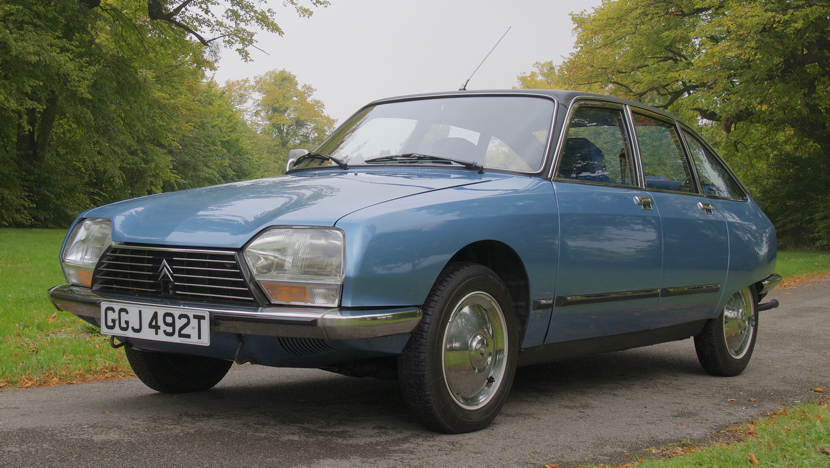
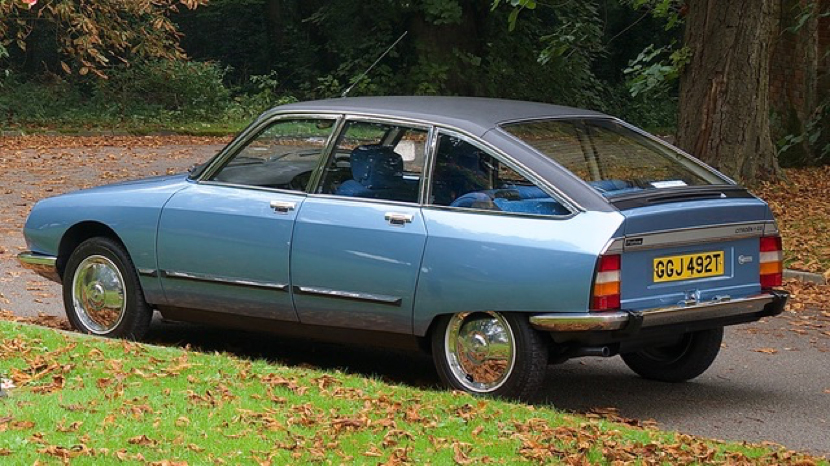
Our GS is a saloon/sedan but there was also a 5-door estate car and a 3-door van. You might expect me to praise the suspension, steering and aerodynamics first but I think that the GS is remarkable because it is one of a very limited number cars made after World War II that was effectively totally new in all areas when it was conceived. I see these “all new cars” as some of the most interesting ever made. I have owned several of them including the UK’s Hillman Imp and, more recently, the original Mercedes A Class and, at present, a 2015 BMW i3 electric car with range extender engine. These cars often do some things better or in a new way and the GS certainly did that. They can also have weak points that need correcting in later versions.
Our GS looks very attractive and is wonderful to travel in and interesting to drive. The hydropneumatic suspension provides a very comfortable ride on the UK’s often poorly maintained roads. The car also self-levels. When you leave the car, it gives a hiss and then gently settles to a lower level and after a day or so it sinks very low. When you start it up after it has been left overnight, you have to wait for it to rise up to normal ride height.
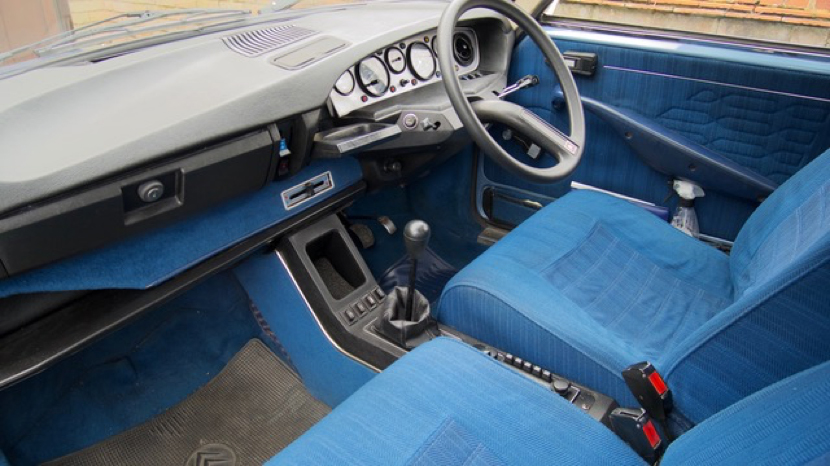
To compliment the ride, all the seats are comfortable. There is virtually no tyre/tire noise on our particular GS. It has steering that gives superb directional stability on a motorway (roads with a central division with a 70 mph maximum speed limit). It nearly steers itself down a motorway but I have to say that our GSA is even better than the GS. It goes around long curves with great stability and it is good in crosswinds. Unlike in many modern cars, you have good visibility out of the car and even very good headlights, assuming the reflectors have not deteriorated. The boot/trunk is large for this size of car because the spare wheel is in the engine compartment.
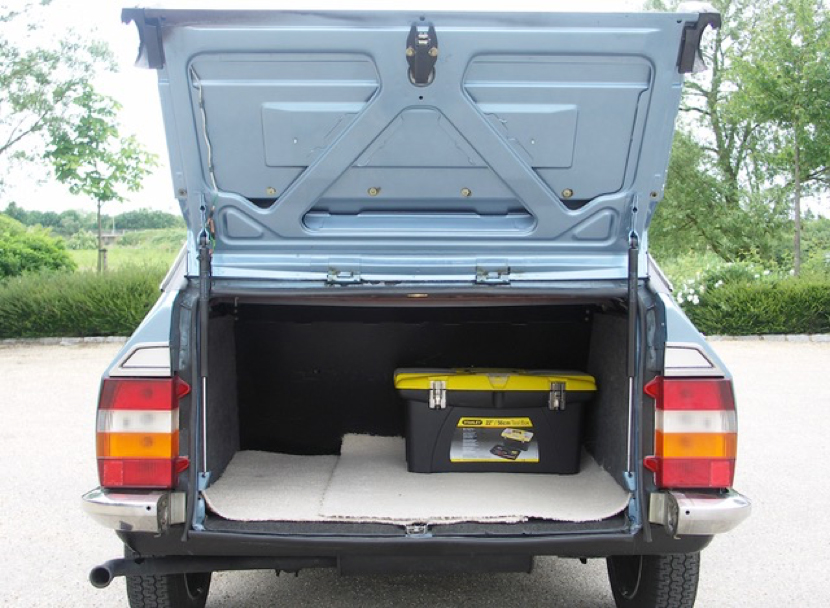
The engine is a flat-4 with 2 cylinders on each side of the centre line of the car. It is cooled by air with a fan at the front. The engine size is 1222cc and there was an earlier engine with 1015cc and that was replaced by an 1129cc engine. The 1222cc version was the most common and has just 60 bhp. It is probably the sweetest and most turbine-like of all the engines fitted to the GS/A, excluding the Birotor.
The C-matic has no clutch pedal. On the GS there is no “park” position for the gearbox so you have to take care when leaving the car on a hill using only the hand brake working on the front wheels. As you move the gear lever from a gear, it goes into neutral, the pressure of the oil in the gearbox drops and you loose drive and when you move it to the next gear, the pressure builds up and the drive takes up again. It is not the quickest of changes but is generally smooth. Note that the 4-speed manual gearbox GS is the most common and it does 0-60 mph (100km/h approx.) in about 15 seconds. A warning: if the GS C-matic has problems; the GSA 5-speed gearbox and GSA C-matic with “Park” will not fit a GS unless the bodywork around the gearbox is bashed out.
The GS C-matic’s, performance is only just about acceptable today in the UK. Sometime you miss not having a gear between second and top (3rd gear); this is especially the case on some hills. If the car was new, it would not matter so much as I would be more content to wind it up to 60 mph at about 6,000 revs in second gear but I would rather not do that with an engine 42 years old. The C-matic does 0-60 (approx 100km/h) in 18 sec and that is quite slow but not 2CV slow. In normal driving, you can set off in second gear somewhat slowly and then carry on to about 50 mph before going into top (3rd) gear. The top speed is 93 mph (150 km/h) as the car is very aerodynamic and I am sure our GS would do its official top speed. It does 30-36 mpg – that is the Imperial gallon that is slightly bigger than a US gallon. The car is very low geared and you are using 4,000 revs at 60 mph but the engine is smooth and quiet at those revs. We normally cruise at 60-64 mph (just over 100 km/h) when allowed because this is the sweet spot for the engine and it is still not burning much fuel.
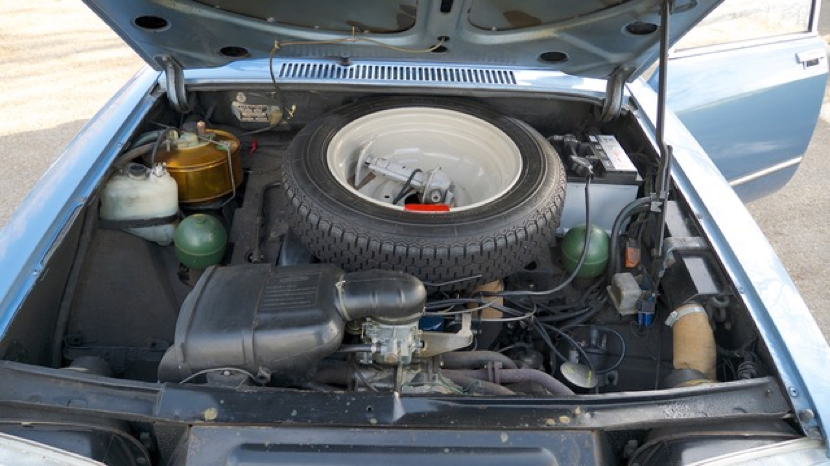
Safety is something that is seldom mentioned by classic car enthusiasts. I think it would be reasonable to state that if you want a classic car in the UK from the 1970s to early 1980s, then the GS/A is one with fewer safety concerns. You can have a puncture/blowout in a front tire and then steer and brake safely even without any computers helping you. A rear puncture has minimal effect and a GS can even run with one rear wheel not fitted when on a high suspension setting. Compared with today’s cars, it would score well on active safety such good visibility, safe handling and steering but not so well on passive safety which is when it hits something or it is hit by something. However, the fuel tank is protected inside the rear sub-frame and the engine will slide below the floor to a certain extent because it slants down towards the rear of the car and I have been told by an “expert” that even the doors are remarkably strong for their period. The GS has good brakes: from 30 mph, a road test of a GS in 1975 showed it stopped in 9.11 meters. Compare that with a recent road test for the Audi Q8 that took 10.9m. Some modern cars need over 11m. We had inertia-reel safety belts fitted to the rear seats when we restored it in 2005.
The steering is not power-assisted and can be very heavy while parking when virtually at a stand-still but as soon as the car moves, even slowly, it becomes acceptable. However, steering weight is not the same on all GS/As.

For us, the worst feature on the GS is the poor ventilation because it lacks the excellent central vent and 3-speed fan of the later GSA. The UK GS has one fan speed for hot air and a separate fan switch for one speed of cold air. If you can withstand the noise from open windows on a hot day, you may not think this is such an issue. You also have to put a muff on the front of the car in cold weather below about 10C/50F. When new, the heating was not seen as particularly good by motor magazines as the engine is air-cooled. What I can say is that on a cold day my GS gets warm air to the screen faster than some modern cars I have owned but the volume of hot air cannot match a modern car’s heat output.
Keeping the GS going:
Essential parts are still available from, for example, the Chevronic Centre Ltd in the UK and the company has had certain items remanufactured. It should be possible to keep a GS on the road for the foreseeable future in the UK. That is not something that can be said about many later cars. One of the reasons for this is that most of the mechanical parts of a GS/A will fit any model.
I am not an automotive engineer and never worked on Citroëns when I was young. My mechanical repair skills and knowledge came mainly from my father-in-law who was a rectifier at the Jaguar car plant and we sometimes worked on our old cars together from about 1968 to 1980 when he had already retired. I only do very minor work on my old Citroëns and leave it all to the Chevronic Centre. In 15 years the GS has only failed once when the hose to the C-matic gearbox’s oil cooler split by the gearbox.
These cars rust. Even if you put new old stock (NOS) doors etc on the car, the parts are still very old and seams may be hiding rust that cannot be seen or stopped easily. You would be asking for trouble in the long term to drive on salty roads in winter. The NOS doors/wings/boot lid on our GS have survived well for over 14 years as I have tried to look after the car properly. When these cars were sold new in the UK, most only looked good for three years, were just OK for six years and were often scrapped at nine years.
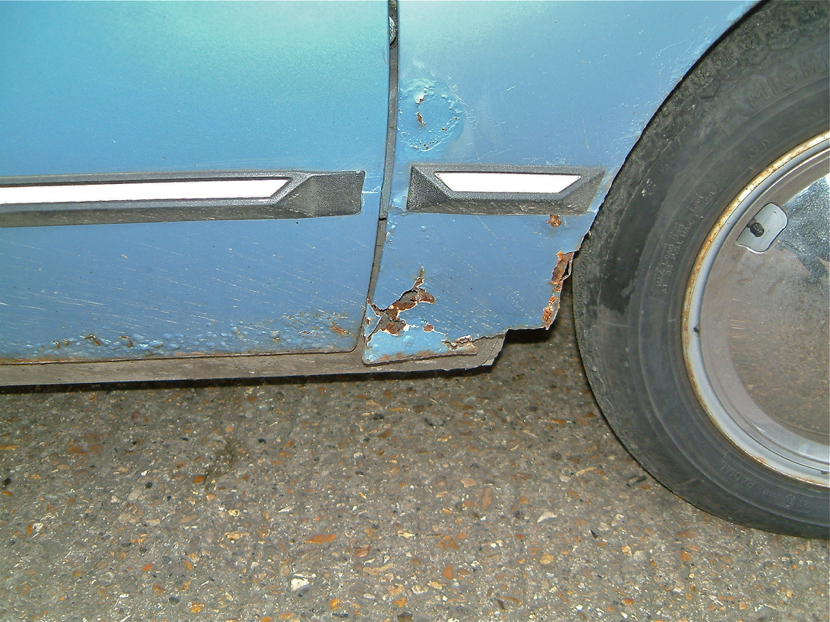
Any G model does not like strong sunlight, especially the rear seat backrest’s top part when made of cloth. I keep mine covered to avoid fade and rot. The steering wheel also needs to be covered if left in strong sunlight. The plastic chrome gutter trim does not like either sunlight or rain and will go a milky colour that usually starts at the ends. Plastic items need a lot of care to keep looking good.
A GS needs to be pampered. In the UK, around £3,500 should purchase a good car. They may not appreciate much but, if maintained well, the car should not lose money over the years.


Just a clarification that the post was written by Clayton Seams for Driving.ca (I just spoke to the camera!) I’ve seen Graham Wilson’s superb GS Pallas C-matic in the classic motoring press a few times over the years and I always admired it.
Hi
I enjoyed reading about your c-magic. I owned 3 GS/GSA’s in the 70’s and 80’s and thoroughly enjoyed them all. I am a bit I’d a Citroen fan even owning an SM for several years but probably as a result of doing a school project on Citroens in about 1960. I wrote to Citroen who sent me a portfolio of photos of every car they had ever built. Great way to gain a customer!
I am toying with returning to GS ownership so would appreciate any leads to a good RHD example
Probably my first step would be joining the Citroen owners club. Do they come up for sale often?
Best regards
Simon
Very informative article thank you! we have had a lot of Gs and one GSA over the years. The export models, (to Australia and New Zealand), had the lovely brushed aluminium dashboard insert around the dials. The export Pallas models all came equipped with the factory sunroof, they had all the options.
I would have thought yours was a 1979 with the Pallas badge placement on the boot and the lack of GS badge on the front right wing, but perhaps it is a late 1978 model which includes these changes made to the last year of production. Was it equipped with its vinyl roof when you bought it?
We have owned both manual and c-matic versions, our c-matic was a 1974 convertisseur,(the c-matic label came later), it was a white club with a bright red interior.